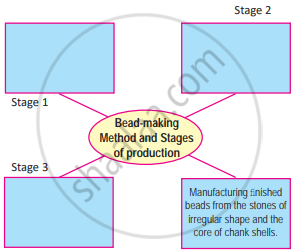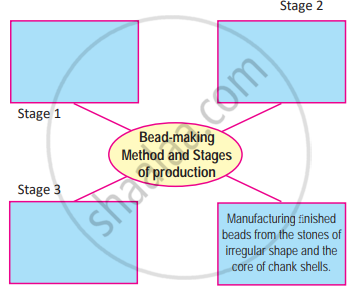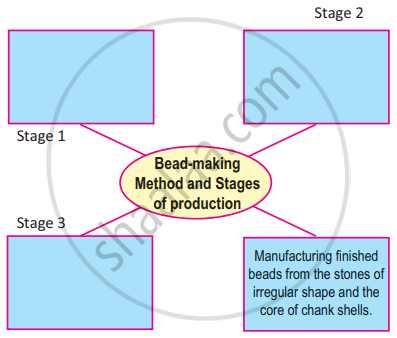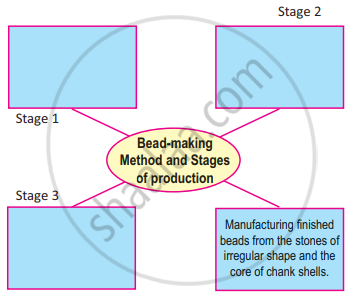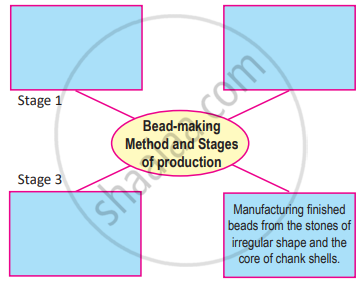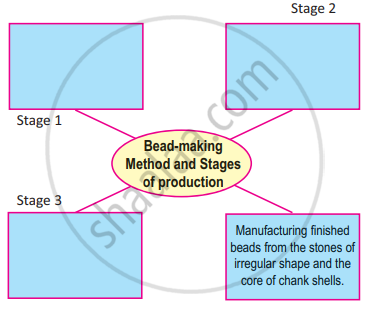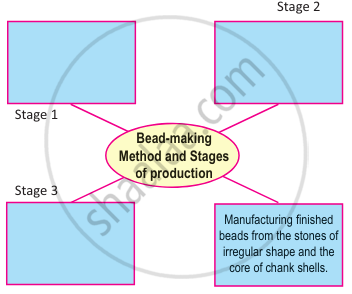Topics
First Farmers
First Cities of India
Chalcolithic Villages in India
Vedic Period
Janapadas and Republics
Second Urbanisation in India
India and Iran (Persia)
India During Mauryan Period
Post Mauryan India
Changing Times
Kingdoms in South India
India, Nations in the Northwest of the Indian Subcontinent and China
India, Sri Lanka and Southeast Asia
Delhi Sultanate, Vijayanagar and Bahamani Kingdom
India During Mughal Period
Swarajya to Empire (Maratha Period)
- Swarajya to Empire - Contribution of Sants
- Foundation and Expansion of Swarajya
- Maratha War of Independence
- Administrative System Established by Chhatrapati Shivaji Maharaj
- Release of Shahu Maharaj
- Peshwa Period
- Swarajya to Empire - Art, Architecture, Literature
- Swarajya to Empire - Trade, Industries, and Social Life
Notes
Agricultural Settlements: Organisation and Administration-
Researchers have attempted to estimate the population of neolithic villages with the help of various mathematical and statistical models. With the help of those estimates we may gather some idea with regards to population compositions of those villages. When Mesolithic people were witnessing the transition from nomadic-semi nomadic life to settled life, there could have been 25-40 people in any given group. Life dependent on regular cultivation would need that number to increase at least to 50. A village with at least a population of 100 could meet the needs of individual members who would be completely dependent on agriculture and animal husbandry. Neolithic villages were small in size. Permanently occupied dwellings (mostly round huts) were characteristic of these villages. Other than these dwellings, some places in the central part of the village were perhaps used as common storage places of food-grains and other things. This internal settlement pattern of the village indicates that the transactions related to food production were centrally controlled. Accordingly a hierarchical chain of power positions must have been established. At the same time other social norms were also established. For example: boundaries of individual householdsfamilies, ownership of land, food production to meet the needs of individual householdfamily and rules of kinship. The tradition of imparting training of unique family skills of production to the younger members is supposed to have begun as early as the neolithic times. In other words, it may be said that the hierarchical social and family structure and the concept of inheritance have its roots in the neolithic times. The culture known as ‘Jomon Culture’ of Japan was a mesolithic culture, which has yielded evidence of pottery making. Except this example, everywhere else in the world making of pottery seems to have begun in the 2nd phase of the neolithic period. Pottery making, along with the polished stone tools, is supposed to be an essential characteristic of the neolithic cultures. The earthen pots were used for the purpose of cooking, serving food and for storage. In the beginning these pots were handmade. At a later stage, wheelmade pottery was introduced. The neolithic pottery in the beginning was in monochrome (single colour), with a burnished surface. Some pots had carved designs. Also the techniques of stamping and applique work. Gradually neolithic people began to decorate their pots with painted designs. Thus, in the latter half of the neolithic age, pottery making had become an art that required special skills.
The class of skilled potters, equipped with essential knowledge of all stages of pottery-making, was already established in the 2nd phase of the neolithic period. Ancient pottery can throw light on various aspects of ancient cultures. We get to know about the cultural history, the material richness of the place where it was found. With the help of pottery we can also know about the contacts of the residents of the place with other cultures. The neolithic period also saw rise of other skilled artisan classes based on specialised crafts. It is apparent that the skill of making beads of various types was acquired by neolithic artisans from the beginning. They made beads of various types of siliceous stones and chank shells. In brief, agricultural production, as well as production of agricultural tools, pottery, beads etc. is a chain of various skill based operations, which are completed step by step. It is a complex system, which calls for systematic division of labour and training of people for various skills. This process leads to craft specialisation and creates various classes of skilled artisans.
Text
Some important Neolithic sites in India:
1. The northwest region of the Indian continent: Phase I (7000- 6000 B.C.E.) No evidence of pottery (earthen pots). Phase II (6000-4000 B.C.E.) Beginning of pottery making, e.g. Mehrgarh.
2. Jammu and Kashmir - around 2500 B.C.E. neolithic settlement established at the sites of Burzhom and Gufkral.
3. Uttar Pradesh - around 6000 B.C.E. neolithic settlements established at the sites of Chopani Mando, Koldihwa, and Mahagara.
4. Bihar - around 2000 B.C.E. neolithic settlements established at sites like Chirand, Senuwar, etc.
5. Northeast India - The evidence of neolithic settlement was first discovered at the site of Daojali Hading in Assam. The village was established around 2700 B.C.E. The neolithic tools found here show more affinity to neolithic tools found in China.
6. South India - The neolithic settlements in Karnataka, Andhra Pradesh and Tamilnadu first came into being around 4th - 3rd century B.C.E. Karnatak sites - Sangankallu, Maski, Brahmagiri, Tekkalkota, Piklihal, Hallur, etc. Andhra Pradesh site - Nagarjunikonda. Tamilnadu - Payyampalli
